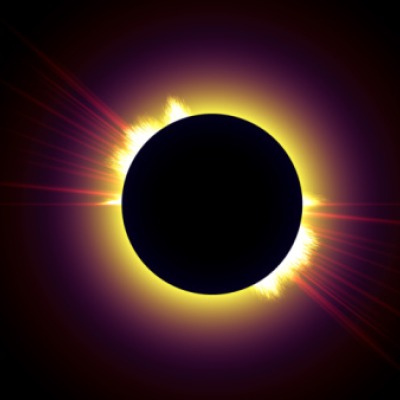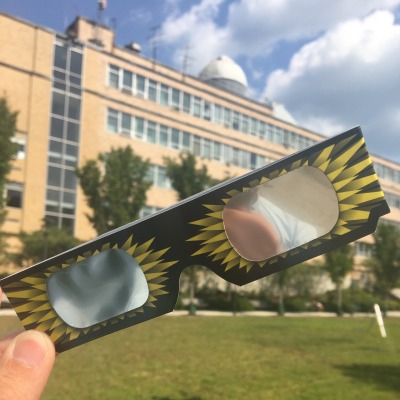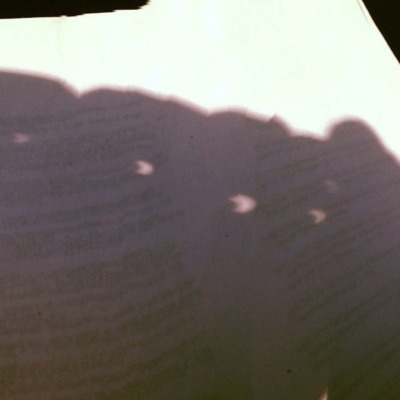What You Need to Know if You Know Nothing About the Eclipse
People across the nation are preparing for one of the most highly-anticipated forms of astronomical art – a total solar eclipse. It’s been nearly 38 years since a total solar eclipse made an appearance in the U.S., but on Monday, August 21, this phenomenon makes its return. Due to its rarity, many are puzzled by the science behind these events. Luke Conlin, assistant professor of chemistry and physics, sat down to share everything you need to know to understand and prepare for the eclipse.
So, what is a total solar eclipse?
A total solar eclipse is when the moon comes between the sun and us on Earth. As the moon passes the sun, its shadow is cast onto Earth.

If the moon intersects the sun and Earth, does that mean everyone in the sun’s path will be in darkness?
Oddly, the answer is yes and no, depending on your geographic location.
A handful of states are in the “path of totality,” which means they are in an area where they will see the moon cover the entire sun, leaving those states in darkness for a few short moments.
Individuals who are not in the path of totality will only see the moon cover a fraction of the sun (a peripheral experience), as the moon begins and ends it’s passing.
What can I expect to see from Salem?
For this eclipse, the northeast region of the U.S. is not in the path of totality, however, from Salem you can expect to see the moon cover about 63% of the sun’s surface, which is still quite breathtaking. We’ll have a dimmer ambiance and a different-looking sun.
When will the eclipse happen? How long will it be?
On Monday, August 21, you can expect to start seeing the eclipse around 1:30 pm; it will reach its maximum coverage around 2:45 pm and is expected to end by 4 pm.
Can I see the eclipse with my own eyes or do I need special equipment?

You can definitely see the eclipse safely! Looking at the sun with your naked eye can be very harmful but especially so when watching an eclipse. It's important to wear eye-protection - sunglasses don’t count.
You can pick up a pair of inexpensive eclipse-viewing glasses at most supercenters or online.
Conlin also encourages people to DIY at home, easily and inexpensively. All you need is tin foil and a pin or any small, sharp object to poke a hole in the foil.
“A pinhole camera will let the eclipse reflect through the pinhole in the tin foil and concentrate it into an image on a surface. Even just using your hand to make a small opening for the sunlight to pass through can make an image,” said Conlin.
He continued, “You can also see the image of the eclipsed sun in the shadows of trees – all those little openings through the leaves make a bunch of natural pinhole cameras! In a given tree’s shadow, you can see lots of little partially eclipsed suns.”
With these methods, you actually won’t even have to look up at the eclipse. Your eyes would be turned away from the sky and toward the surface that concentrates the eclipse's silhouette.
Here’s a shadow projected by pinhole camera created by Conlin during a partial solar eclipse in 2014:

Places to watch the eclipse and when will we see one again
Where’s the best spot on the North Shore to watch the eclipse?

The Collins Observatory on the roof of Salem State’s Meier Hall will lend a VIP seat for Monday’s eclipse. Conlin is hosting a free public solar-eclipse viewing party from 1-4 pm in the observatory.
During the party, Conlin will teach guests how to make their own protective eyewear for safe viewing.
To join, enter Meier Hall on Lafayette Street and take the elevator to the top floor, signs will be posted directing guests to the observatory.
If you can’t make it to the solar eclipse viewing party, you can make your own viewing spot wherever you are, as long as you have the right eye protection! Lots of viewing parties are happening in Salem and across the North Shore.
When is the next total solar eclipse?
Make sure you pull up a seat for Monday’s viewing because you won’t get another chance to see a total solar eclipse until April 8, 2024 – mark your calendar!
If you like what you read or what you see during Monday’s eclipse, Conlin invites you to explore your inner astronomer during open observation hours at the Collins Observatory, every clear-skied Monday from 7-10 pm beginning Monday, September 11, 2017, in partnership with the North Shore Amateur Astronomy Club. Happy eclipsing!
